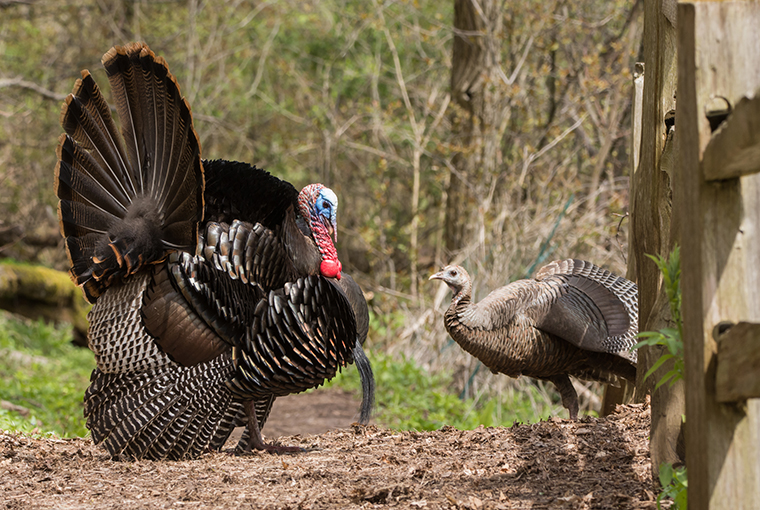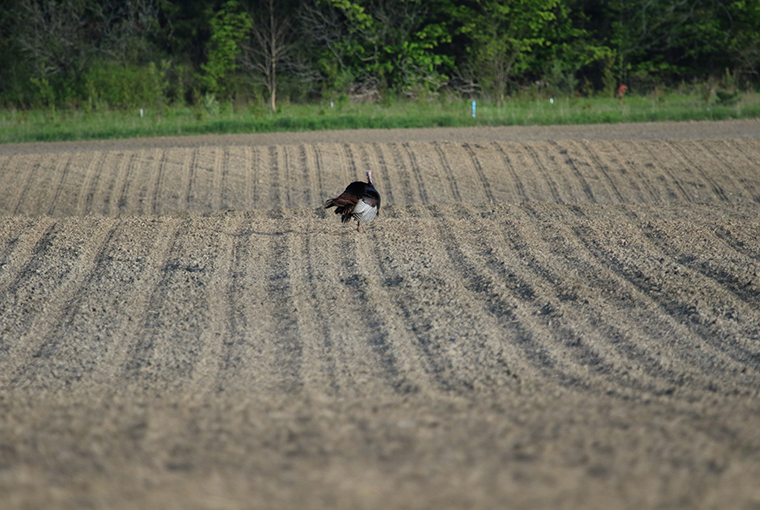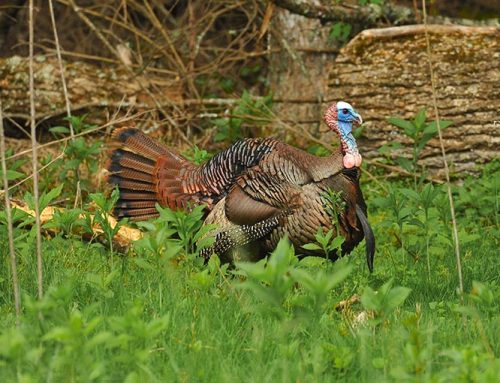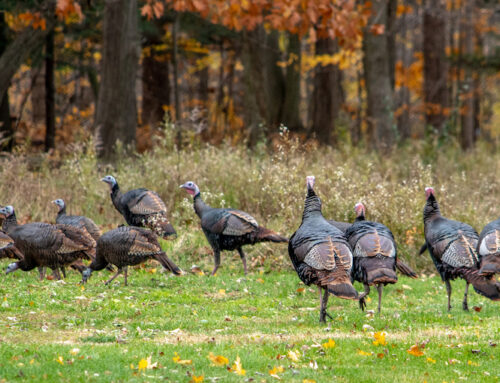
If turkey hunting was always easy, there’d be fewer challenge-seekers afield. Some bad birds, however, can be downright discouraging.
There’s hope, however. So don’t give up. Here are four situations where you might be tempted to move on to another bird, and the tactics to give yourself a chance.
The wrong-way tom
Hunting a roosted tom can be a magical experience when everything goes right. You did your homework to find the tree he roosts in and snuck in well before first light to set up near him, leaning against the perfect tree. Darkness slowly yields to half-light. As the eastern sky brightens, your anticipation builds. At last, his booming gobble greets the new day. He gobbles again and you casually respond with a soft tree yelp. He sounds off again and pitches down right in front of your barrel. Kabooom! You sling him over your back and are home for breakfast before the rest of the family is even up. Magical.
Many toms don’t believe in magic, however. If you get one of those, he stays up on the limb gobbling his wattles off for an hour, then eventually flies down away from you and walks out of your life. The next time you hunt him he does the same thing.
Tom routines
The reasons for this can be numerous. First, he stays up there gobbling to call in a hen or hens that are willing to breed. If he doesn’t see one, he moves on to an area where he knows he will have better luck with the ladies. Even if you have a hen decoy out and call seductively, he wants to see that hen come right to him for assurance that it is the real deal. A hen decoy that never moves looks phoney to him after a few minutes.
Also, toms are routine driven. Unless disturbed, they fly to the same spot and walk off the same way each day. Don’t try to change his routine by setting up where he doesn’t normally go. Watch and listen to figure out his route and set up quietly along it before first light. Don’t call in case he is feeling pressured from too much hunter yelping and is spooked by calling. If you misjudged his route and need him to divert toward you try non-vocal calls like scratching in the leaves and wing beats. If that doesn’t bring him toward you try soft clucks and purrs.
The offside tom
Most wild turkey habitat in Ontario is a patchwork of privately owned farms and woodlots which restrict ethical hunters to properties they own or have permission on. A beard swinging tom, however, doesn’t recognize property lines and goes wherever it suits him. Too often that’s where you don’t have permission. But, he might not be out of play if you can draw him back. If you can hear a tom gobbling, he can hear you call.
Your plan begins with scouting to pattern his movements and finding his roost area. If he roosts where you can hunt but immediately flies down and walks out of bounds at first light, then your best gambit may be to set up on him in the dark and be the first hen he hears at first light. Set up as close as you can to where he normally flies down.
If that doesn’t succeed, keep in mind that toms often return to the roost area throughout the day and definitely in the evening. So, a patient all-day sit with sporadic calling near the roost may pull him back over the line to you.
Wayward roosting
If a gobbler roosts where you don’t have permission and walks away from your calls at first light, don’t despair. He has heard you and will remember where your calls came from. At first light he joins up with the hens that came to his gobbling and walks off with them. By some point late in the morning or into the afternoon, however, he will have bred all the willing hens and they will leave him to go to their nests. Then your call will sound pretty good to him. Set up on your side of the property line at the spot that will give him the easiest route back to you without barriers. If there is a gap in the fence or an open gate, set up near it. Don’t set up so that he has to walk through brushy woods. He’ll prefer coming through open hardwoods or along a tractor trail. Give him easy walking and good visibility to watch for predators and to strut and display if he wants.
Learn when toms use your properties and be there when they are. If you know they are on neighbouring properties but you haven’t been able to pattern them, go to the highest point you can and yelp and and cluck with a loud call, like a boat paddle box call or a glass-and-metal pot call. Call at 30-minute intervals until you get a gobble. Then tone it down to soft clucks and purrs. Let him know you are there but not interested enough to go to him. He will have to cross the property line and come to you.
Tag team trick
A pressured tom will walk away from calling. So, you and a buddy can team up to exploit this trait. You can use your call to push him toward your silent partner. One of you sneaks in before first light and sets up to call to him on roost when he starts to gobble. The other sets up quietly before first light on the opposite side near his usual escape route, but doesn’t call.
This will give one of you a chance at him whichever way he goes.
The field strutter
Longbeards live by one rule in the spring breeding season. Hens come to them. They don’t go to the hens. That rule keeps them from walking into ambushes and their beards growing longer. This is why you can call to a field strutter from the woods for days, using every call in your vest and he will not come toward you. There are still ways to get him in range, however.
One of the simplest is with a strutting tom or jake decoy combined with a hen decoy. If he is a dominant tom, he will not tolerate another tom with one of his hens. Jealousy will unhinge him and unglue his feet, bringing him in.
Another good option is a pop-up blind set up in the field near where he likes to strut. A little flock of hen decoys will add a lot of charm to the scenario for him. Of course it has to be set up and accessed before daylight and it may take several days before he will come in range of it. This could backfire if real hens lead him away from the little flock of intruders.

Field wrinkles
If you don’t want to pay this expense for blinds and dekes and do all this set- up work just to kill a tom, you still have a chance. If the field has a wrinkle in the terrain that is capable of hiding you near where he likes to strut, get there quietly in the dark and wait for him to fly down and march out to his strut zone. A few soft clucks and purrs on your call may bring him to the crest of the ridge you are hiding below and in range for a shot.
Another good option, if he walks in to the field, is to observe where he enters the field and set up near there the next morning. Don’t call. Just wait for him to come by deer-hunting style.
If you have time for a long game, play take-away with him. Call to him from hiding in the woods. If he answers, he’s interested but expects the hen to come to him. Move slowly away, calling as you go. Do this again the next day and the next until one day he can’t stand this mystery hen leaving him anymore and he breaks his own rule to come looking for you. This tactic works best late in the season when most hens are incubating their eggs all day and the tom is getting little or no attention from them.
The tom with hens
Real hens are your worst nightmare on a spring hunt. A tom with hens will answer your call with a lusty gobble but won’t likely leave the ladybirds. When he gobbles back he is saying, “Come join the party.”
Pecking order challenges are the way to go because boss toms like to fight as much as they like to breed. The jake and hen decoy set-up described earlier can draw a boss tom away from his harem. If you don’t have decoys, you can create the illusion of a jake with a hen by calling. Use excited hen yelps and cutts followed by jake yelps and a jake half gobble. Be sure to call from a location he can’t see until the jealous tom steps into range of your firearm.
If trying to incite the tom doesn’t work, you can call to the boss hen with excited yelps and cutts. If she responds, mimic her calls note for note and even cut off her calls with your own excited yelps and cutts. The goal is to get her worked up enough to come in and investigate the intruding hen. The tom will follow along behind her.
More options
A third option is to mimic the sounds of a turkey fight with wing beats, fighting purrs, and cutting.
Other turkeys are curious about fights because it may mean a change in the social order and their standing in it. So the whole flock, including the tom, may come in range to investigate.
If the flock is on the move foraging, follow them undetected and calling sporadically. At some point the hens will wander off to their nests if it is mid-season or later, leaving the toms alone and now interested in your calls. Also, a subordinate tom might peel off from the group to join up with a hen himself.
A henned-up, out-of-bounds tom won’t be able to stay on posted land all day unless it is a large acreage that meets all his needs. Chances are he will need to roost, feed, travel through, or look for willing hens at some point during the day where you have permission. That is where a bad bird can meet his demise if you are willing to figure him out and meet him there.
Nightmare scenario
I can’t imagine a worse scenario than to have a wrong way tom go out of bounds and get henned up, strutting in a bare field. But that is the norm at one of my spots. The toms roost across the road on the edge of a field where I can’t go. When hens come out into the field the toms fly down. They feed and breed and mess around for hours.
My huntable property, however, has a long, high ridge running through it and the toms come over when they’re done with the hens. They cross the road to gobble from that ridge, broadcasting their availability and hoping other hens yelp back. By knowing when toms cross the line back in bounds I can put myself in their path.
Originally published in the Spring 2024 issue of Ontario OUT of DOORS






Leave A Comment